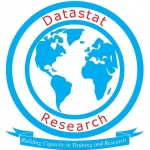|
|
Training Course on GIS Mapping for Disaster Risk Management
USD 1,000 |
Venue: Nairobi, Kenya
The rapid population growth and urbanization combined with extreme climatic events are causing a swift increase in vulnerability of communities to hazardous events. Unplanned growth both in urban and non-urban areas calls for preparation to reduce the impact of disasters, and there is a great need to utilize disaster risk information in designing effective coping mechanisms.
Disaster risk information is spatial in nature and geographic information systems (GIS) play an important role in disaster risk assessment and management. There is a need to create awareness among disaster management professionals regarding the importance of utilizing GIS.
The course also emphasizes on the use of the data during pre- and post-disaster management such as in early warning systems and hazard-, vulnerability-, risk-, and damage assessments as well as in the design of risk reduction measures.
Duration: 5 days.
Who Should Attend?
The course is open to all participants who are working or will be working in the organizations where spatial information is used or considered to be used for the purpose of disaster risk management, disaster management, or disaster risk reduction. There is no prerequisite GIS knowledge for the participant who is interested in this course.
Course Objectives
Upon completion of the course, the participants will be able to:
- Describe and utilize spatial data, geographic information systems (GIS) and remote sensing in disaster risk assessment and management
- Utilize existing sources of historical disaster information
- Apply GIS/remote sensing in hazard, vulnerability, and risk assessment
- Utilize risk information in emergency preparedness planning
- Visualize hazard and risk information
- Apply GIS/remote sensing to post-disaster damage assessment
Course Content
- Basic concepts and terminologies of disaster management
- Basic concepts of geographical information systems (GIS) and remote sensing.
- Introduction to spatial information
- Handling spatial information (introduction to ArcGIS)
- The use of satellite imagery for disaster relief and recovery
- Impact analysis and preliminary damage assessment
- Building damage assessment
- Hazard assessment
- Elements at risk and vulnerability assessment
- Types and methods of risk assessment, risk evaluation, cost and benefit analysis
- Risk evaluation
- Visualization of risk information
- Risk information and spatial planning
Methodology
The instructor led trainings are delivered using a blended learning approach and comprises of presentations, guided sessions of practical exercise, web-based tutorials and group work. Our facilitators are seasoned industry experts with years of experience, working as professional and trainers in these fields.
Key Notes
i. The participant must be conversant with English.
ii. Upon completion of training the participant will be issued with an Authorized Training Certificate
iii. Course duration is flexible and the contents can be modified to fit any number of days.
iv. The course fee includes facilitation training materials, 2 coffee breaks, buffet lunch and a Certificate upon successful completion of Training.
v. One-year post-training support Consultation and Coaching provided after the course.
vi. Payment should be done at least a week before commence of the training, to DATASTAT CONSULTANCY LTD account, as indicated in the invoice so as to enable us prepare better for you.
| Nairobi, Kenya | Nov 18 - 22 Nov, 2024 |
| USD 1,000.00 | |
Sammy Gathuru 0724527104
Related Courses
 Training Course on International Protocol and Diplomacy
Training Course on International Protocol and Diplomacy
5 days, 06 - 10 Jan, 2025
Datastat Research Center
 Training Course on Grant Management using Infor Sun Accounting System
Training Course on Grant Management using Infor Sun Accounting System
12 days, 06 - 17 Jan, 2025
Datastat Research Center
 Training Course on M&E, Data Management and Analysis for in Food Security and Nutrition Programmes
Training Course on M&E, Data Management and Analysis for in Food Security and Nutrition Programmes
5 days, 06 - 10 Jan, 2025
Datastat Research Center




